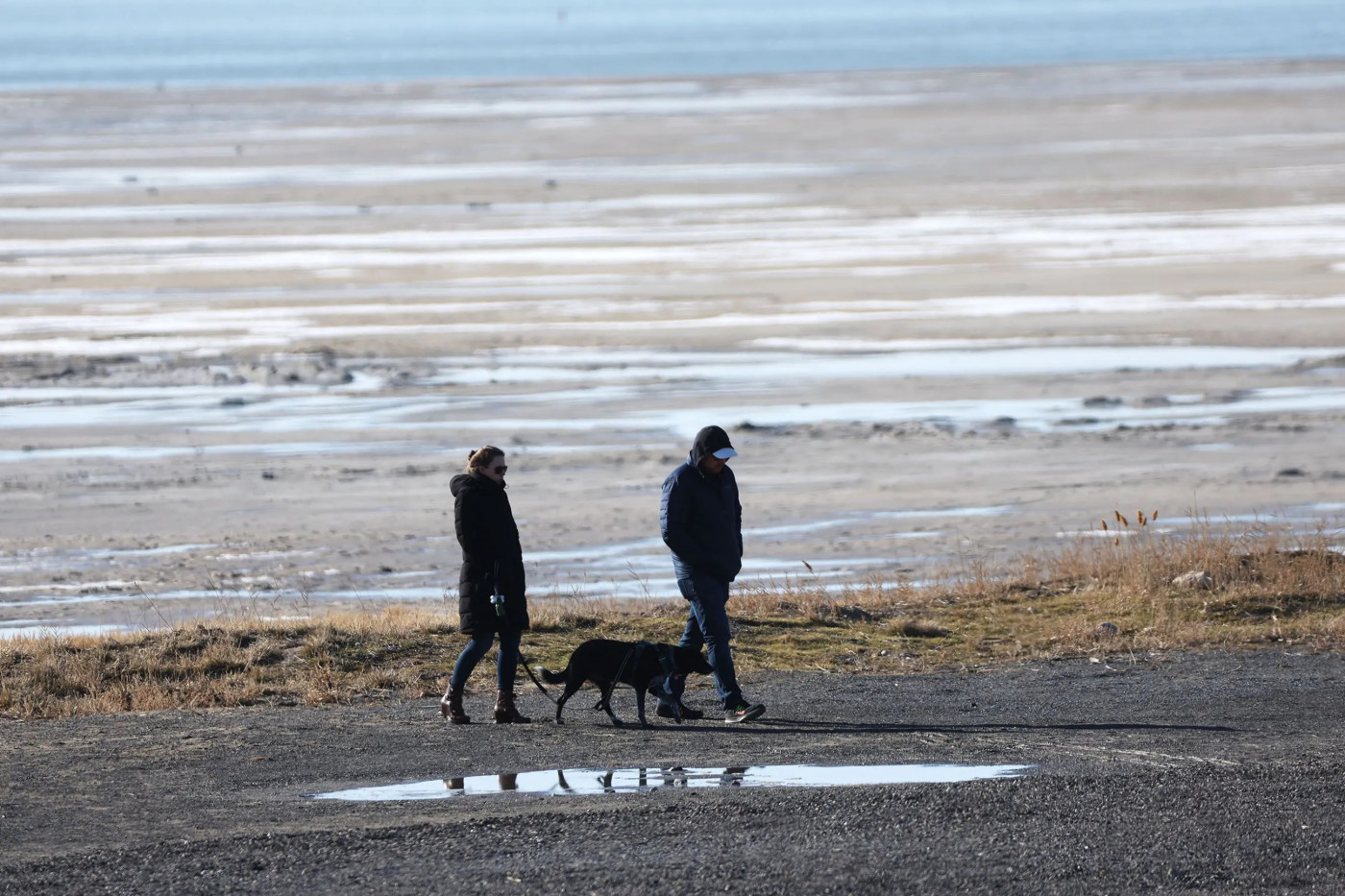Utah Farm Bureau says new law is a game changer in agricultural water use
Critics panned the Utah Legislature for failing to set a target elevation for the Great Salt Lake via a nonbinding resolution.
They complained about lack of action on strict new landscaping requirements and objected to a newly endorsed per capita calculation documenting how much water is used by consumers like industry and cities.
Under another failed measure, big water conservancy districts would have had to disclose water usage and their water rights.
Some of this added up to the complaint that Utah lawmakers in this last session didn’t do enough to make sure water makes it to the ailing Great Salt Lake, which has reached historic lows and jeopardizes a unique ecosystem, industry, air quality and the state’s cultural identity if it continues to fade away.
But the Utah Farm Bureau, in a meeting with the Great Salt Lake Collaborative on Tuesday, said lawmakers embraced an “epic” shift in water law tried nowhere else in the West — a move they say will be a game changer in the years to come on how water is saved, and where it ends up, with the Great Salt Lake being among those recipients.
SB277 and how it works
“I have not seen anything like it elsewhere,” said Warren Peterson, a water law attorney who worked in the agricultural arena as an adviser to 30 different states and Australia and serves on a half dozen water policy groups in Utah. He said he has had ranching and farming in his blood for 40-plus years.
“Personally, I am not aware of any other state that has done this,” he said.
“This” is the ability for agricultural producers to cut their water consumption without the law of “use or lose it” dangling over their future.
Instead, SB277 sponsored by Sen. Scott Sandall, R-Tremonton, requires the state water engineer to quantify the water savings producers have made by taking a “haircut” on their consumption. As an example, if a producer saved 25% of what they normally use, that figure is documented by the state engineer and then monitored. The Utah Division of Water Resources then compiles an annual report on the efforts.
“This is a fundamental shift we have made this year,” said Spencer Gibbons, chief executive officer of the Utah Farm Bureau.
The state has had in place for some time what are called agricultural optimization grants available to producers. The grants are used to deploy new technology or other means to make water use more efficient on the landscapes. It could be sprinklers, pivots or some other method to shave water consumption.
Last year, the state Legislature ponied up $75 million for the program, and farm bureau officials say there were more applications than money available. The state provides up to a 50% match on projects.
Gibbons explained that agricultural producers want to be careful stewards of water and are constantly questioning how they get the most out of this finite resource, but they don’t want that “saved” water relinquished.
The difference this year
Incentivizing water savings can reduce a household water bill. It cuts costs for big institutions like universities and hospitals.
But actual water rights holders face a different dilemma in that their right entitles them to a set amount of water, lacking any savings benefit if that right isn’t fully realized. In addition, if that water is not proven to be put to beneficial use after seven years, it is subject to forfeiture to the state.
This year, the Legislature changed that. Agricultural producers can put in an application with the state engineer’s office for that water savings and monetize it through an avenue like the Great Salt Lake Trust established in 2022 that is securing water rights for the Great Salt Lake. Or they can make money on the water they saved by selling it to be put to some other beneficial use. Lawmakers appropriated $200 million in funding.
Peterson described it as a longtime overnight success story.
“This year Senate Bill 277 answered the long and difficult question there. There’s two parts of that question. One is if an agricultural producer does a good job of managing their water and so say they optimize their water systems and they wind up with saved water, what happens to that water and the law in the past has been quite unclear. But it seemed to be that the farmer simply lost that water. So there’s the disincentive to the farmer.”
Like Peterson reiterated, Sandall’s measure provides clarity and solves the issue of disincentivizing producers.
Sandall’s heavy lift
Sandall, a Tremonton farmer and rancher, is the first to admit SB277 was not an easy sell to agricultural producers at the outset.
Again, they were weary and distrustful at seeing water savings go down the proverbial drain and having their tightly held water rights put in jeopardy.
“For the last year and a half, I’ve been trying to, in my mind, figure this out because this disincentive to save was always the bottleneck on why producers probably don’t want to try to convert or save,” he said. “I just kept asking, like, how can we do this? How can we track the water that we saved?”
He credits state engineer Teresa Wilhelmsen for coming up with the change application component which allows producers to save water and then lease it and make money.
“The light went off in my head,” Sandall said. “So now we’ve created this incentive for farmers to move to this new technology. And probably my opinion is, eventually the water is going to be worth enough that they’re going to want to pay for it on their own. And we will see the day.”
That day, he said, is when water will mean enough it doesn’t mean grants for saving, and water goes where it needs to — the plant — and is not wasted.
Sandall added the Legislature took a lot of hits for not embracing immediate, short-term fixes for the Great Salt Lake, but he sees this and other measures as a generational change that will have long-term impacts.
This year’s snowpack helped, with emergency levers in place that didn’t need to be pulled, he said, adding the snow will allow some of these far-reaching measures to begin to play out.
“I still say this absolutely was the right thing to do,” he said.



